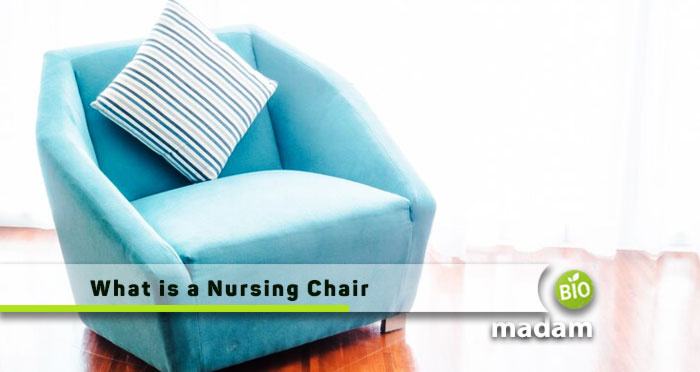Welcoming a new baby into your home is a joyous and transformative experience. It also comes with its fair share of challenges, especially when it comes to caring for your little one. One essential item that can greatly ease this process is a nursing chair.
In this comprehensive guide, we’ll explore what nursing chairs are, why they’re important, what to look for when choosing one, and how to use them effectively to create a nurturing environment for both you and your baby.
What Does a Nursing Chair Do?
A nursing chair is not just any ordinary chair; it’s a dedicated space designed with the comfort and support of both caregiver and baby in mind. Its primary purpose is to provide a comfortable and supportive spot for nursing and feeding your infant. It creates a soothing environment to help you bond with your baby while taking care of their nutritional needs. Beyond that, a nursing chair is an ergonomic solution, reducing strain on your back and arms during those long feeding sessions.
Features of a Nursing Chair
Comfort and support are the pillars of a great nursing chair. It should have a cushioned and low seat and backrest to cradle you during feedings. Armrests provide the necessary support for holding your baby comfortably. An excellent nursing chair also offers adjustable positions, allowing you to recline or use swivel or gliding functionality to find the perfect angle for nursing. Durability and safety are paramount, with sturdy construction and safety mechanisms such as locking features to ensure peace of mind.
What is Important for a Nursing Chair?
When selecting a nursing chair, prioritize safety, comfort, and ergonomics. Think about the size and space considerations for your nursery or living area. Aesthetic compatibility matters too, as you want the chair to blend seamlessly with your surroundings. Also, keep your budget in mind, as there are options for every price range.
Types of Nursing Chairs
There are several types of breastfeeding nursing chairs to choose from, each with its own unique features:
- Rocking Chairs: Traditional rocking chairs and glider rockers provide gentle back-and-forth motion, creating a soothing experience for both, you and your baby.
- Recliners: Reclining nursing chairs allows you to find the most comfortable position for feeding and can be useful for relaxation beyond feeding times.
- Upholstered Armchairs: These chairs often come with extra padding and comfort, making them an excellent choice for prolonged nursing sessions.

Benefits of Using a Nursing Chair
Investing in a nursing chair has numerous advantages:
- It enhances your comfort during long nursing sessions, reducing physical strain.
- It supports your baby’s feeding experience, promoting bonding and relaxation.
- The chair’s design creates a dedicated nursing area, encouraging routine and relaxation.
Nursing Chair vs. Regular Chair – Main Differences
The primary difference between a nursing chair and a regular chair lies in its design and functionality, specifically tailored to the needs of caregivers and infants during feeding and bonding moments. Here are the key distinctions:
- Comfort and Support: A nursing chair is designed for maximum comfort and support during long nursing sessions. It typically features extra padding in the seat and backrest, as well as well-placed armrests to provide the caregiver with proper support. In contrast, a regular chair may not prioritize such comfort features.
- Ergonomics: Nursing chairs are designed with ergonomic considerations in mind. They often have adjustable positions, such as reclining options or swivel/glide functionality, to help the caregiver find the most comfortable position for feeding. Regular chairs, on the other hand, may lack these adjustable features.
- Bonding and Relaxation: Nursing chairs are intended to create a soothing environment for both the caregiver and the baby, promoting bonding and relaxation. The gentle rocking or gliding motion in some nursing chairs can be especially calming. Regular chairs may not provide this level of environment for nurturing bonding.
- Dedicated Nursing Space: Many nursing chairs are designed to be part of a dedicated nursing or feeding area. They often fit well within nurseries or designated caregiving spaces, creating a comfortable and convenient spot for feeding routines. Regular chairs may not be as purposefully placed in such areas.
- Size and Design: While regular chairs come in various styles and sizes for general use, nursing chairs often have specific designs and dimensions that accommodate the caregiver’s needs while holding the baby comfortably for feeding.
- Durability and Safety: Nursing chairs are typically built to withstand frequent use and may incorporate safety mechanisms like locking features to ensure stability during nursing. This focus on durability and safety might be more pronounced in nursing chairs compared to regular chairs.
Conclusion
A nursing chair is a vital sanctuary of comfort, support, and bonding for caregivers and babies. Its ergonomic design, distinct from regular chairs, creates a soothing environment, encouraging relaxation and routine. Whether it’s the gentle rocking, adjustable positions, or dedicated space, a nursing chair enhances the feeding experience, reducing strain while fostering connection. It’s worth investing in a nursing chair as this essential piece ensures you have precious moments with your baby that are stress-free. Choose the perfect nursing chair, elevating your parenting journey with the comfort and support you deserve

People call me Domonique Smith in Ross! I was always fond of helping people, so opted an MBBS degree to pursue my passion as my career. My major interests fall in dealing with pregnant ladies and helping them in the best of my wills for their comfort. I am further planning to choose Gynecology as my major, so wish me luck!

